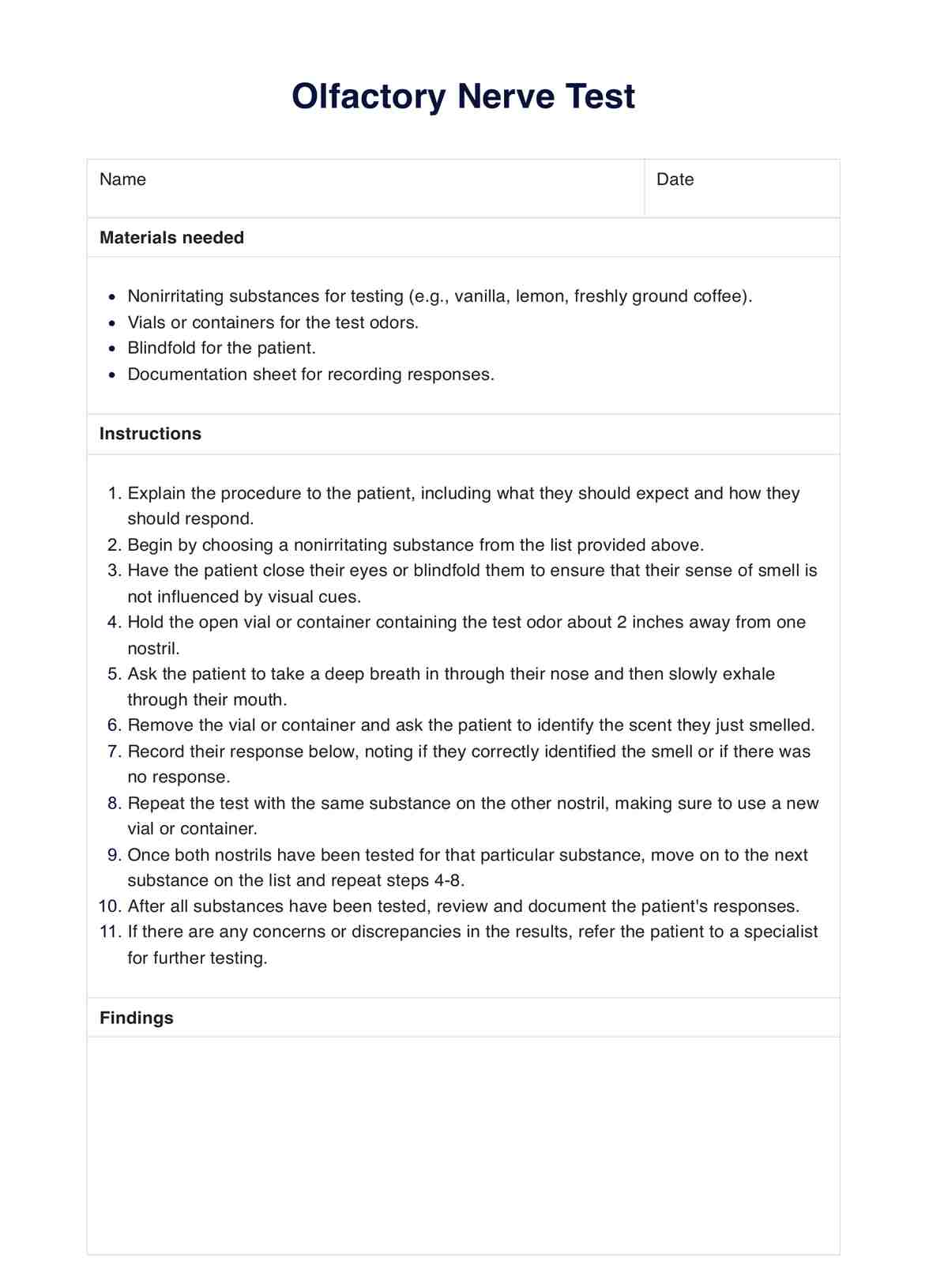An Olfactory Nerve Test is a diagnostic procedure used to evaluate the functionality of the olfactory nerve (Cranial Nerve I), which is responsible for the sense of smell.

Olfactory Nerve Test
Discover the Olfactory Nerve Test: procedure, results, and potential causes of abnormal outcomes. Get a free PDF to record results quickly.
Use Template
Olfactory Nerve Test Template
Commonly asked questions
If an individual is experiencing a loss or change in their sense of smell, an Olfactory Nerve Test can help determine if the olfactory nerve is implicated in the issue.
The test typically involves placing scent sources under the nostrils and asking the patient to identify the odors. The accuracy of odor identification is used to assess olfactory nerve function.
EHR and practice management software
Get started for free
*No credit card required
Free
$0/usd
Unlimited clients
Telehealth
1GB of storage
Client portal text
Automated billing and online payments











